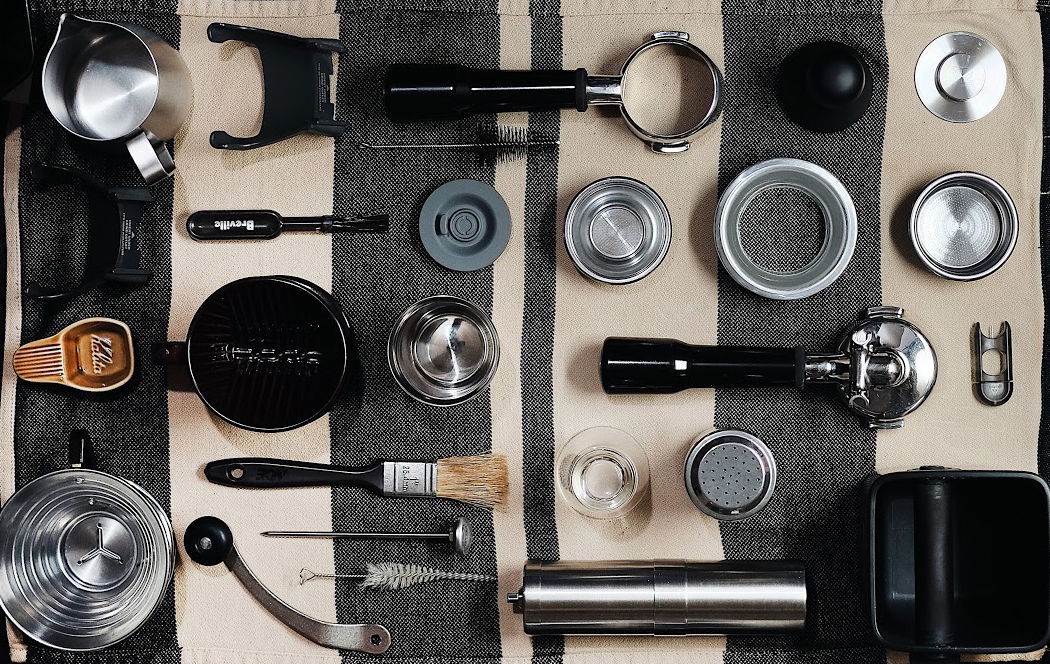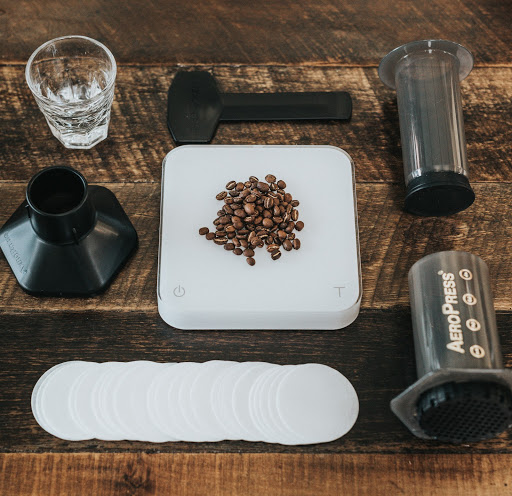My coffee journey has been a long one, filled with delicious drinks, continually refined tastes and a love of the coffee experience – from finding new beans, grinding them and trying various brewing methods. I remember disliking coffee when I first tried it, brewed in a $10 coffee machine with beans that had been preground and living on store shelves for a long time. That was the coffee that my family was used to – sometimes made more palatable with the addition of a lot of ginger and a lot of milk.
My first out-of-home coffee experience was the Americano at Starbucks, with cream. It did the job (keeping me somewhat awake for classes) and with sweetener was something I did enjoy at the time. When I first tried flavored lattes (hazelnut mostly and cinnamon dolce) I considered them a treat – they were sweet and creamy and I enjoyed them for their flavor.
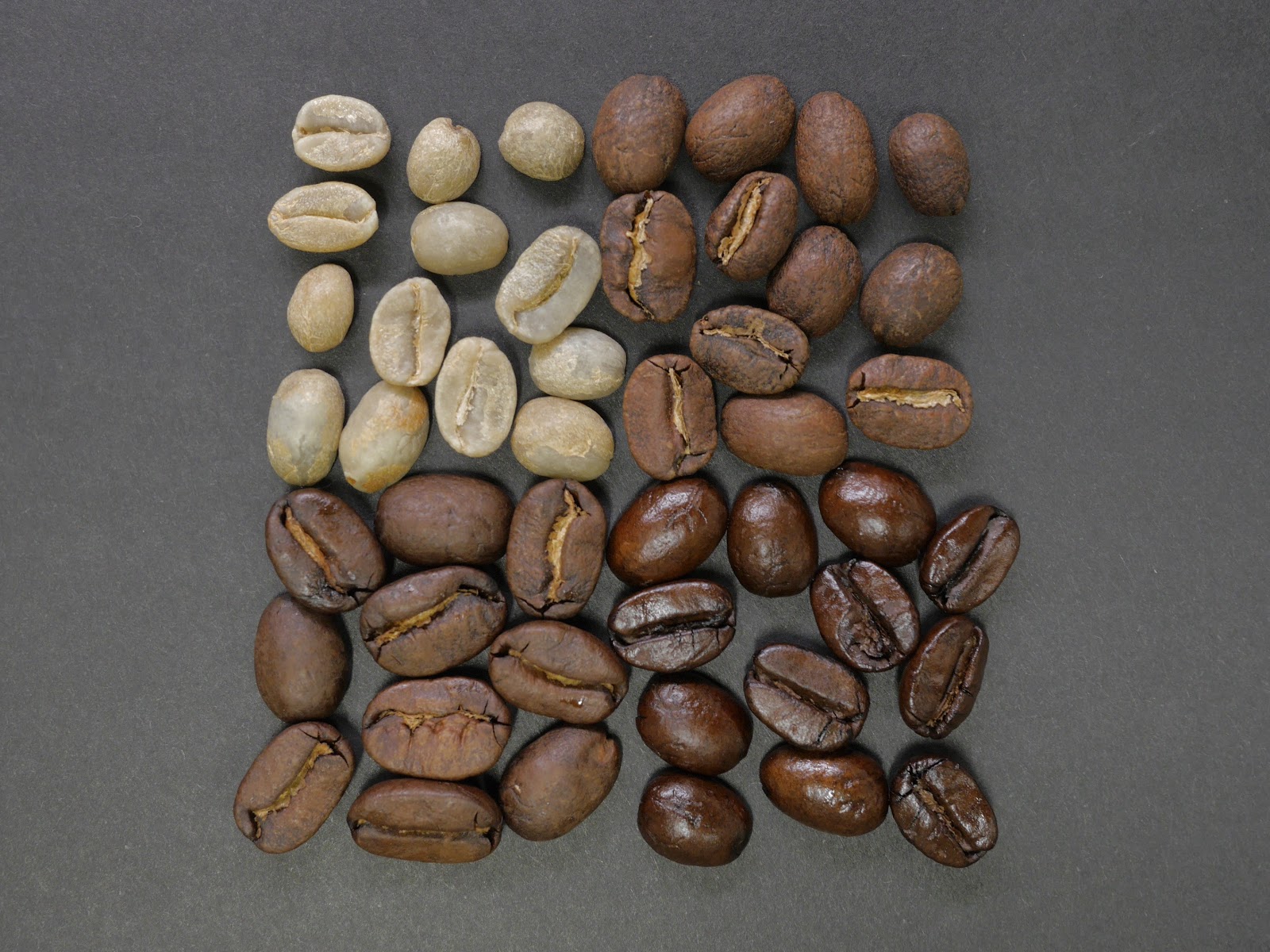
I then started my career in tech. My first day at work had me face to face with an espresso machine in the kitchen and this small plastic gizmo called an Aeropress. The espresso machine initially seemed enticing: press a button to grind beans, use the damper to press it down, put it in the machine and press a button to dispense the shot. That creamy espresso shot won me over and I made an excessive amount of lattes for myself over the next few months. Somewhere in there, I adventured to San Francisco and discovered some of my favorite coffee shops and also learned that there are so many flavor profiles you can get from different beans (more on this later) and most importantly that freshly ground beans make divine coffee. The aromatic compounds dissipate when beans are ground…so the pre-ground coffee in grocery stores does not compare – especially after it’s been opened once. As I started collecting beans I tried out different methods of brewing.
The French Press
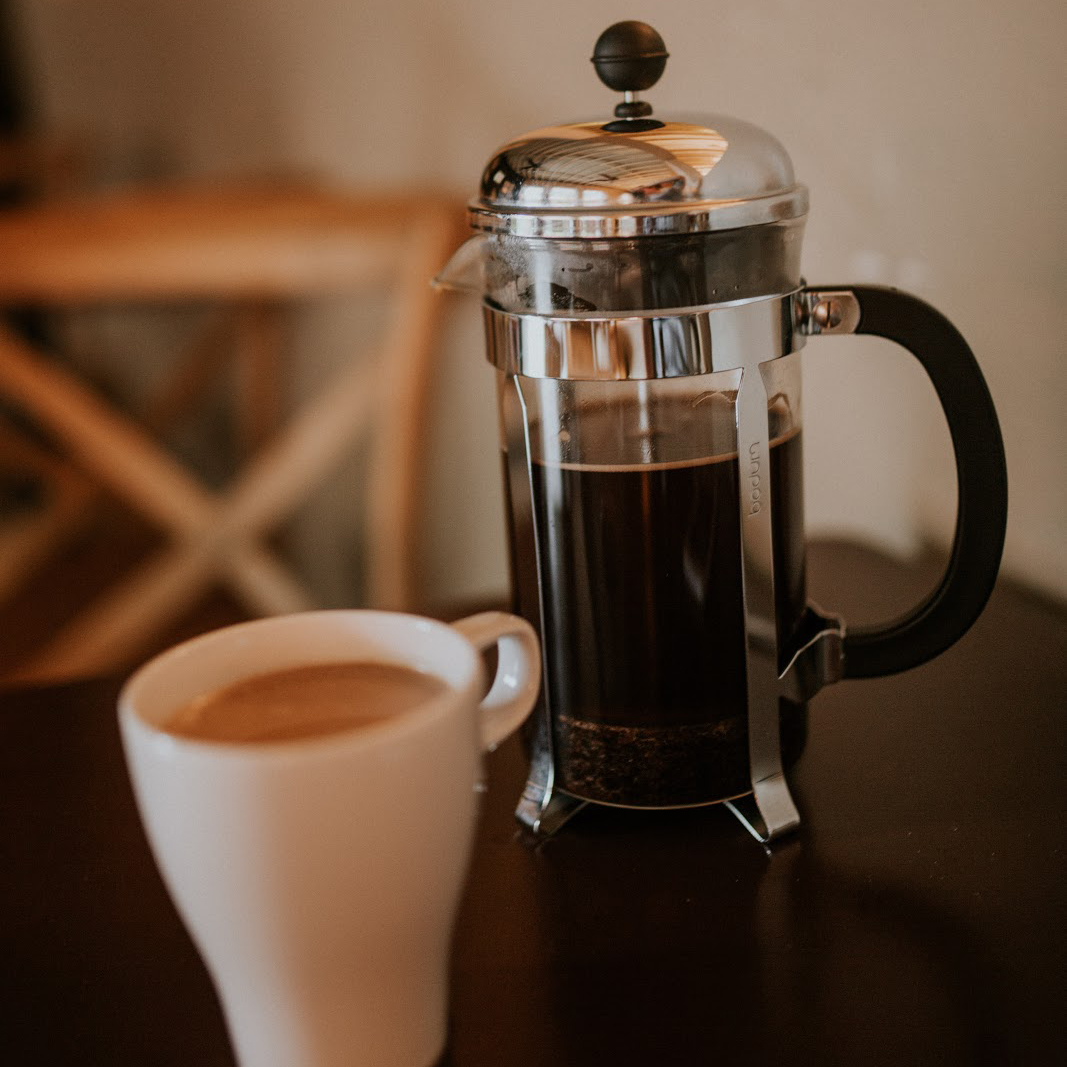
My first at home coffee equipment (after the $10 drip coffee maker) was a french press. It was inexpensive and seemed like an easy way to make coffee. Add coarse grinds, water, wait a few minutes and plunge. I found the coffee to be quite bitter regardless of how long I let it steep (between 1-5 minutes) and couldn’t get the flavor be something I enjoyed. It’s not that it’s bad, it just wasn’t for me and there were a few too many times I’d be in a rush and leave the grinds in the press after using it. Ideally you take apart the press part (metal part) and wash it all along with the body which can be time consuming.
The Chemex
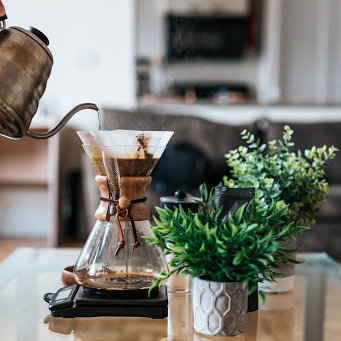
I was initially intrigued by the Chemex because it was beautiful and it came with the promise of making coffee taste smooth. I tried the Chemex for a little while and found that it worked really well for beans that were suited for pour-overs – once that are medium or light roast with bright fruity and citrus flavours. The Chemex really helped mute the bitterness and bring out the flavours in the beans. The output tended to be more watery though for me (not more than you would expect from a pour-over) as I liked the consistency of a creamy latte. I really liked the Chemex as a pour over method and to bring out bright juicy flavours but it wasn’t my favourite. In terms of cleaning, it wasn’t too bad if you just use the Chemex paper filters and a pour over dripper directly into a mug – all you’d have to do is rinse the dripper after you toss the filter with grinds.
The Espresso Machine
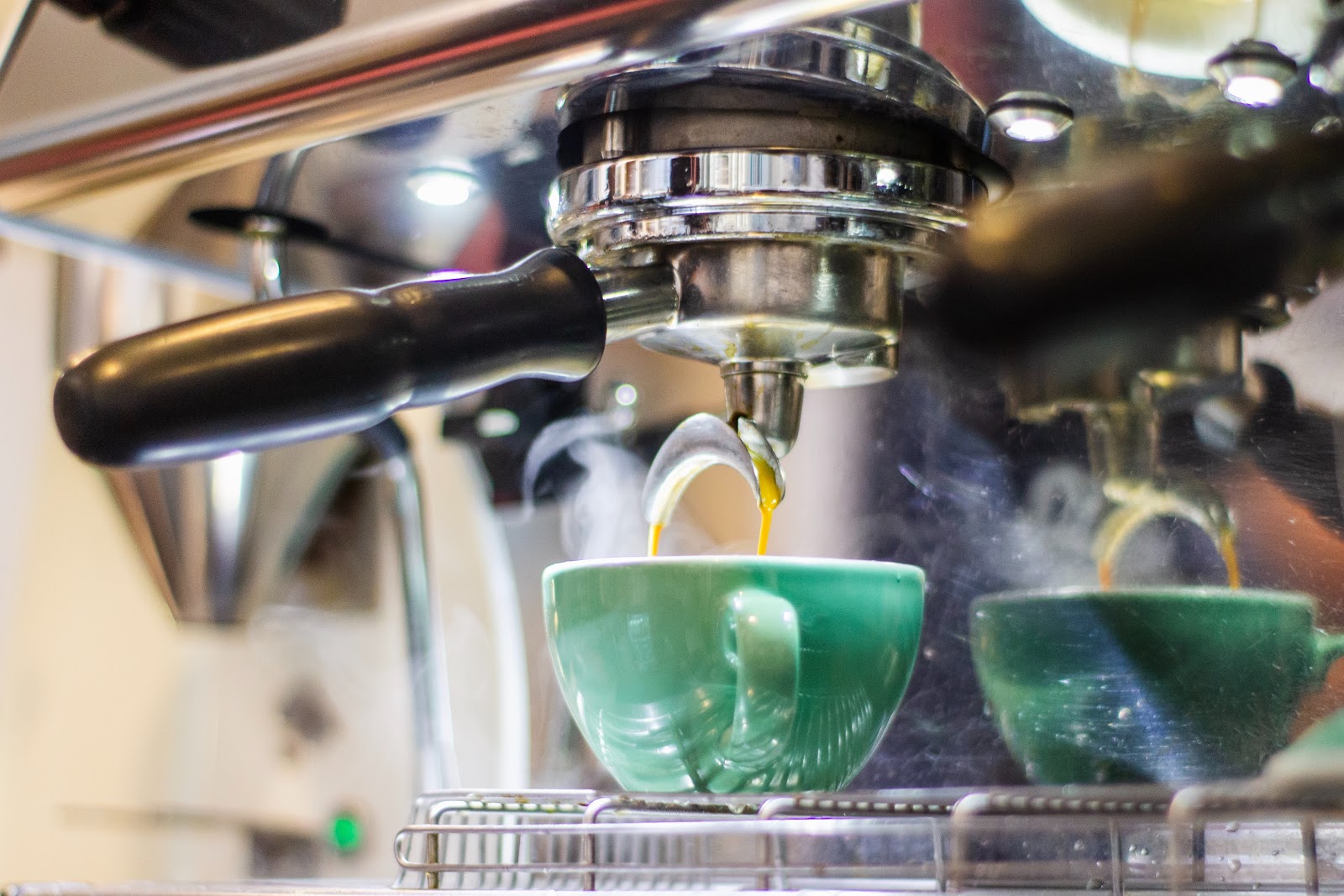
There are many types of espresso machines with many features and this post isn’t about the best espresso machine so I won’t go into those. I’ve had some of my best cups from espresso machines – the crema from a good high pressure shot combined with creamy hot milk is something to savour. The two issues with espresso machines for me are cost and portability. It’s not something you carry around with you (camping, adventuring or even to another location) and they’re an investment (when you want something good that won’t break often on you). Cleaning it (at least when you’re using someone elses’) isn’t so bad – tap the grinds out and rinse the espresso holder. It sounded like properly cleaning the machine periodically is required. That, and our office espresso machine had to be serviced many times.
The Aeropress
I alluded to how my first tech job had me face-to-face with an espresso machine and Aeropress. At the time, the espresso machine won. The Aeropress sounded a bit more confusing – there was a plunger, the main body, the filter, and the filter paper…you put them together in some order with fine grinds and wait a minute or so before plunging. Then you had to take it apart and clean it. It’s way easier than that just sounded. You insert the plunger in the base, set it to the height you want (adjusts how strong/dilute it is) rest the Aeropress on it’s plunger, add your grinds and water, add a filter paper to the filter, screw it on, wait until the time is up and flip it onto a mug and plunge. Its super easy after you do it a couple of times. When you’re done, unscrew the filter, plunge out the grinds and coffee and give everything a rinse in hot water. Done.
The Aeropress is super portable and light so you can take it anywhere to get a nice smooth shot. This is my favourite method taking into account cost and portability because it gives you that high pressure (though obviously not as high pressure as an espresso machine) shot with a nice smooth strong flavor that you can turn into a latte. This was exactly what I wanted, smooth lattes without espresso machine costs or space. Over the years, I’ve found that I get all the nuance of different beans with this method and still get to enjoy them in a latte. I can vary the strength and dilution by varying the amount of grinds, steep time and amount of water. I can customize but also get a consistently delicious shot mixed in with my super creamy milk (to find out the best way to get creamy milk read here).
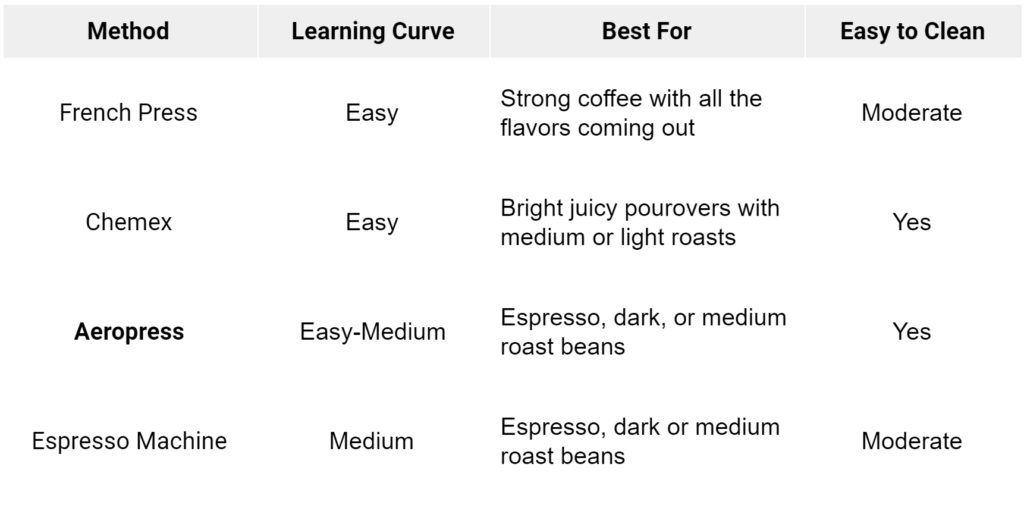
Note: As an Amazon Associate I earn from qualifying purchases. We may earn a small commission from products linked on this page.
